My second year of shooting film – Part 15
(Read Part 14 here)
I can’t remember exactly what triggered the idea to shoot underwater with a film camera first: a mention of the Nikonos camera in my twitter feed, or the painterly effect I got this winter on film with an early morning shot in the fog. But the idea formed, and it stuck. I had never heard of the Nikonos, so I googled it, and found a great looking camera system with interchangeable lenses that is waterproof. At first I tried to reject the idea, even with digital cameras underwater photography is hard enough, why would I try to do it on film? But like I mentioned, last winter I got some unexpected painterly result with a few photos I shot on a foggy morning, and I really liked the result.
I figured that underwater I might find similar conditions: low light and a lot of light-scattering particles creating the opposite of a crisp image, which I interpreted as painterly. In the fog it’s small drops of water that scatter the light, underwater it would be the opposite: small bubbles of air. And as my vacation to the Caribbean was coming up, where we always do a lot of snorkelling, this was a good time get into it. So I did some searching on the internet and found a nice guy in Belgium willing to sell his Nikonos V with two lenses: the hybrid 35mm f/2.5 and the hybrid 80mm f/4.0 (hybrid means they work both underwater and in air).
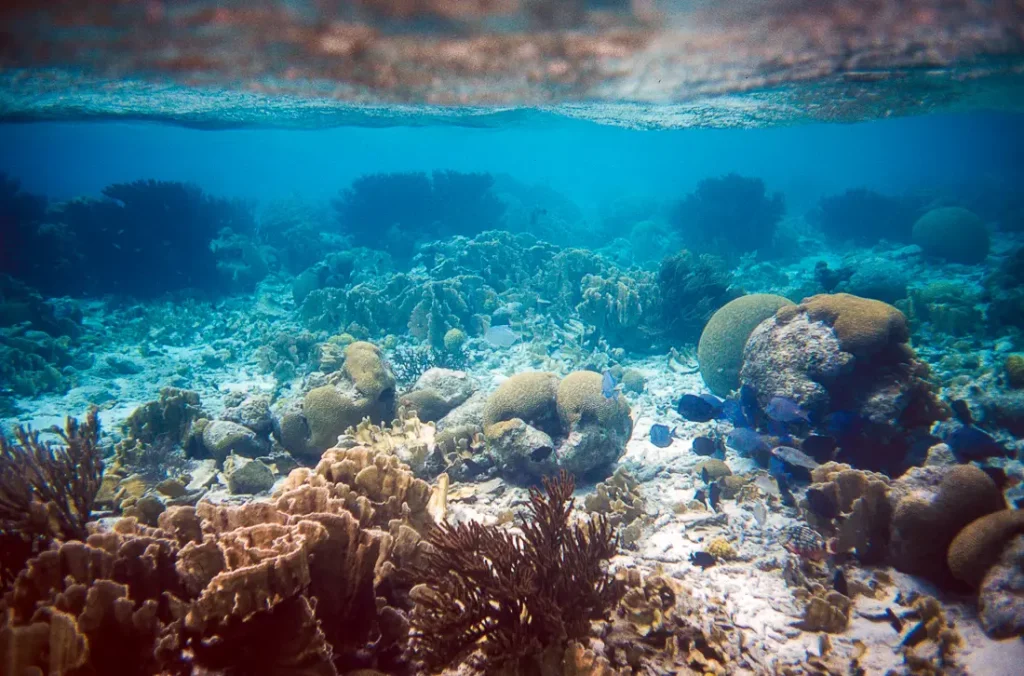
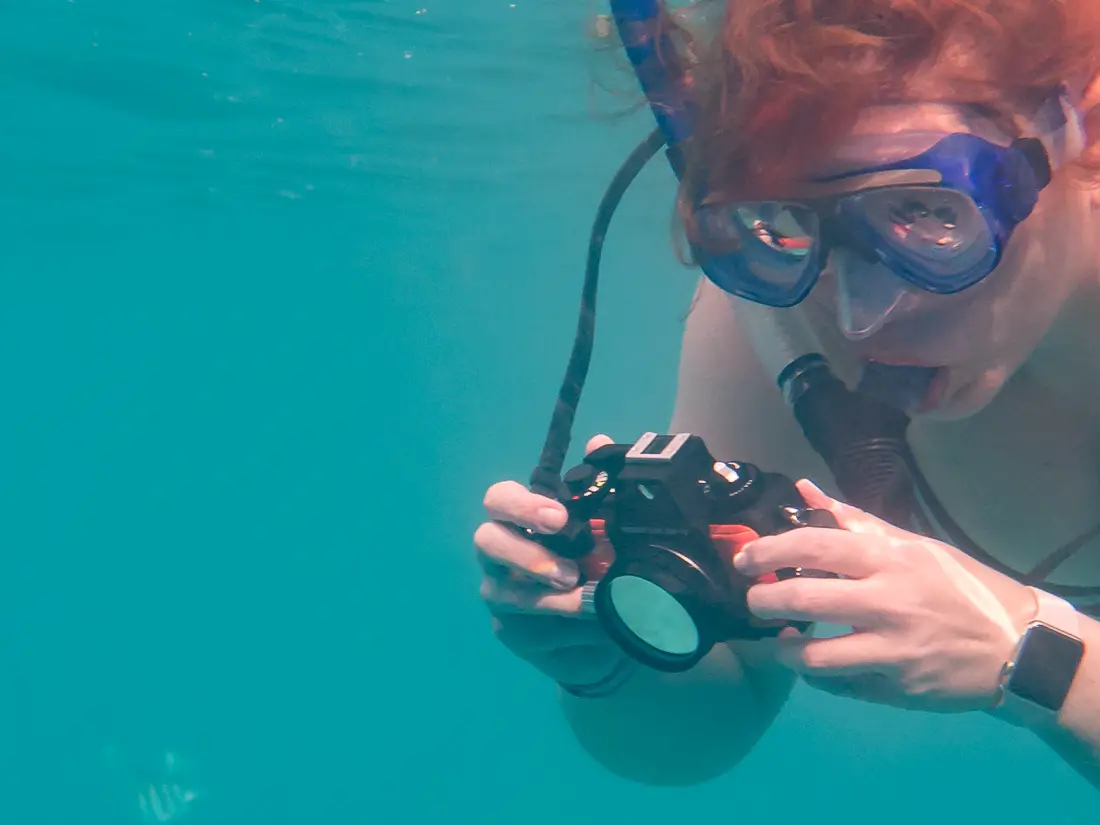
The Nikonos V is a manual zone-focussing camera with through-the-lens automatic exposure (manual exposure is an option too). It has a flash port suitable for a flash with TTL exposure control, but since I don’t dive I figured I could manage with natural light only. I tried a number of different films:
- Kodak Ektar 100. I loved the colours I achieved last winter with Ektar, and I figured underwater in the bright Caribbean sky would be similar to winter light in Holland. So I definitely wanted to try Ektar.
- Kodak Ultramax 400. To make life a little bit easier, iso 400 would help me get some decent exposure times in the early morning. This is my first time with film underwater, and I had no idea whether iso 100 that I get with Ektar would be sufficient. Someone on twitter kindly suggested Ultramax as an alternative to Ektar, as it would have similar colours.
- Kodak Portra 400. I had some in the fridge, and I normally prefer Portra over Ektar in bright sunlight, so I would bring this anyway.
- Kodak Tri-X 400. I wanted to try some black and white too, and I could push this a stop to give some more margins to work with if the light levels would be low.
- Fuji Velvia 100. Although I have never tried slide film before, I wanted to try this because the colours of the coral and fish can be pretty awesome. So Velvia is a tried combination with the Nikonos.
There was a risk here, I didn’t have time for a test roll as I purchased the camera days before our vacation. So I shot 10 rolls during the holiday without knowing for sure the camera worked. I looked for a photo-service on Curaçao, the destination of our holiday, but there wasn’t one, so I just had to take the risk.
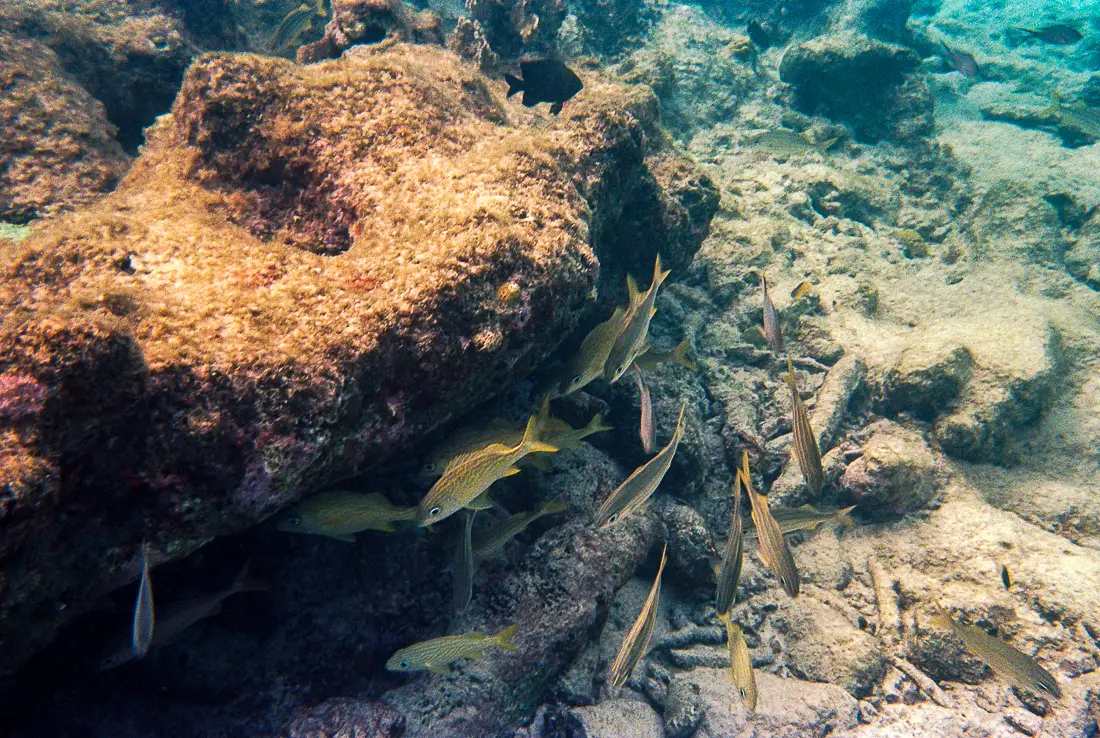
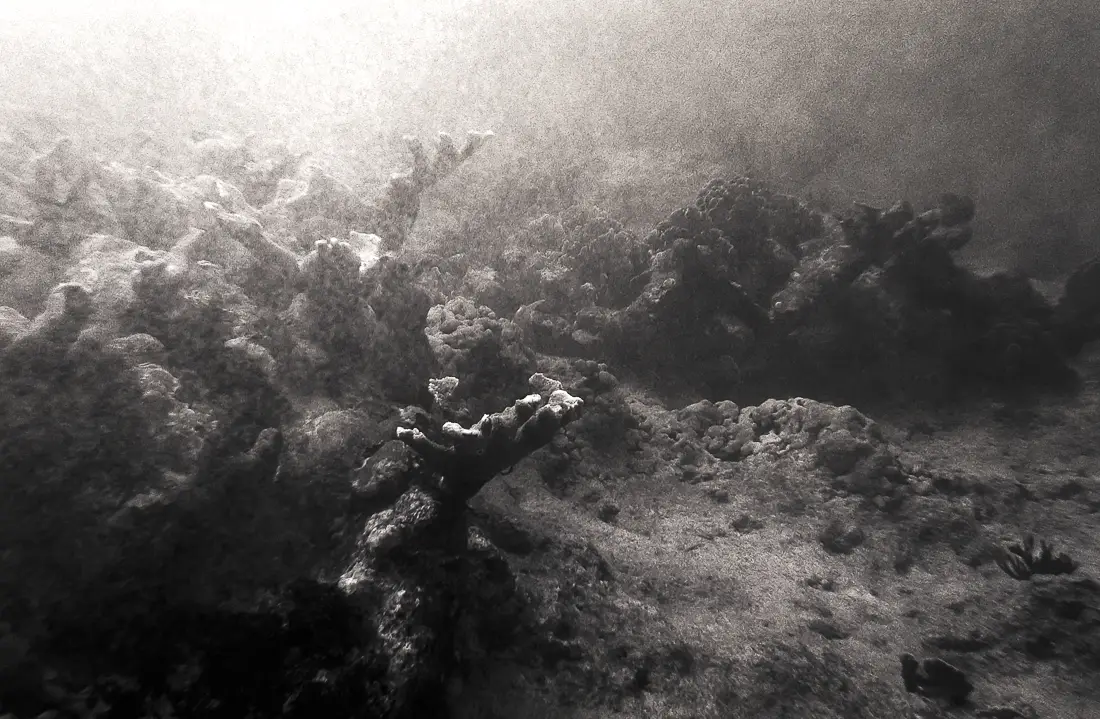
Shooting with the Nikonos underwater is a great experience, the camera handles really well, and the shutter sound underwater is fantastic. Before I used a small point and shoot in a plastic bag for my underwater photography, and I can say that the view through the Nikonos viewfinder is much much better than looking at a small display on the back of a camera. About exposure values, in my experience after shooting 10 rolls with the Nikonos V, iso 400 is necessary when shooting early morning or on a windy day (as the water gets more wild, light levels underwater become lower). But when snorkelling around noon on a quiet day, iso 100 can be sufficient. I ended up with exposure times between 1/60 and 1/250 seconds.
This is what you get on a reasonably quiet morning, about one hour after sunrise:
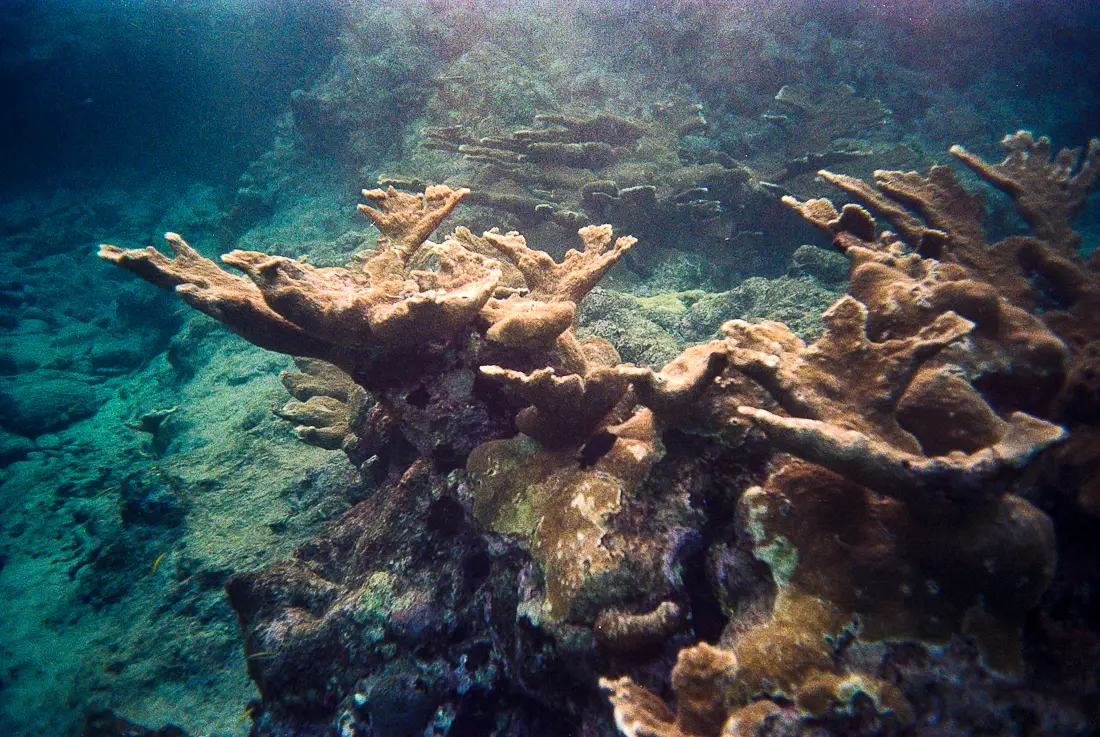
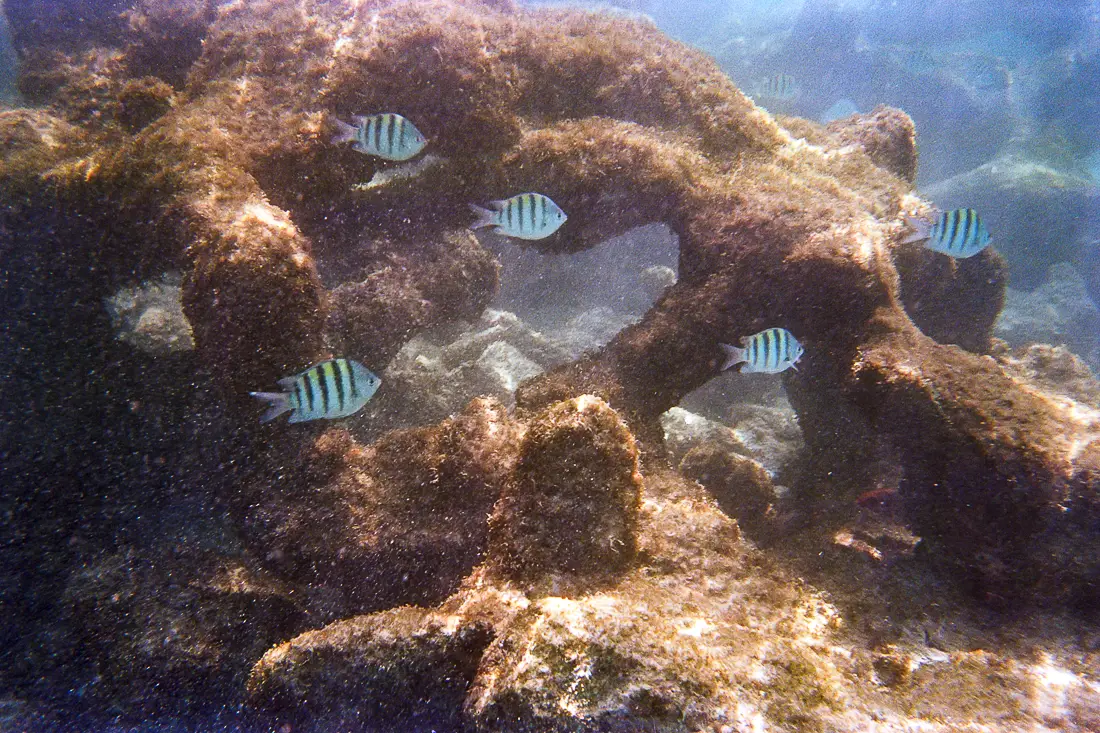
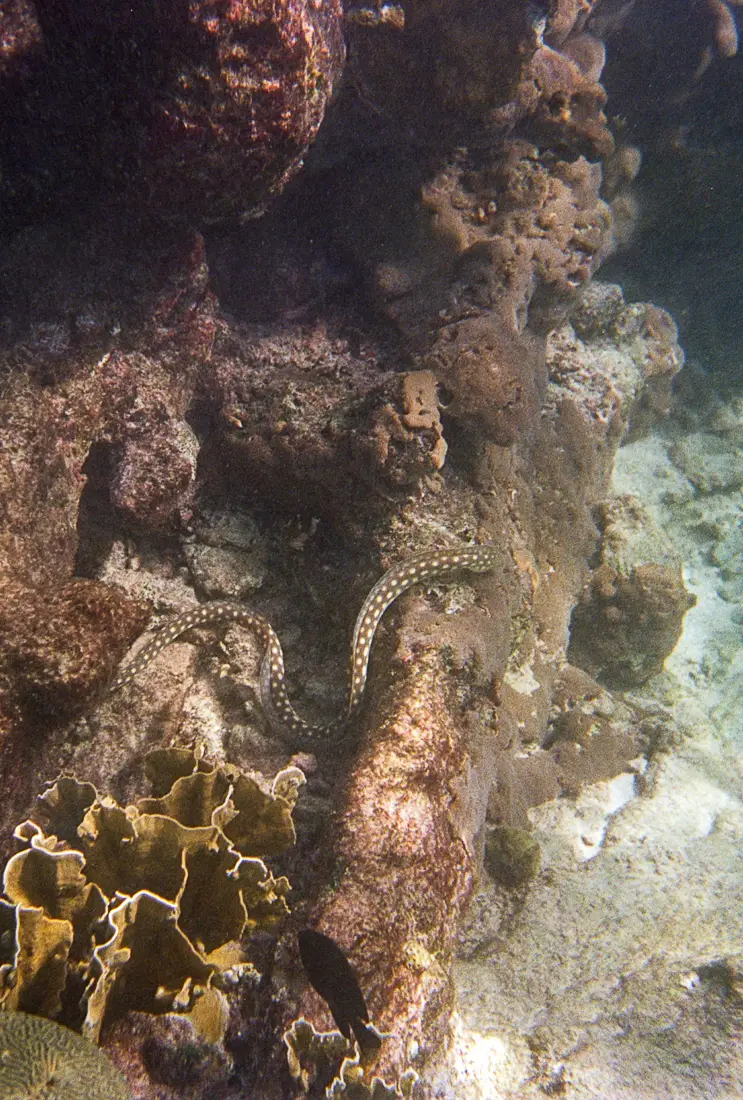
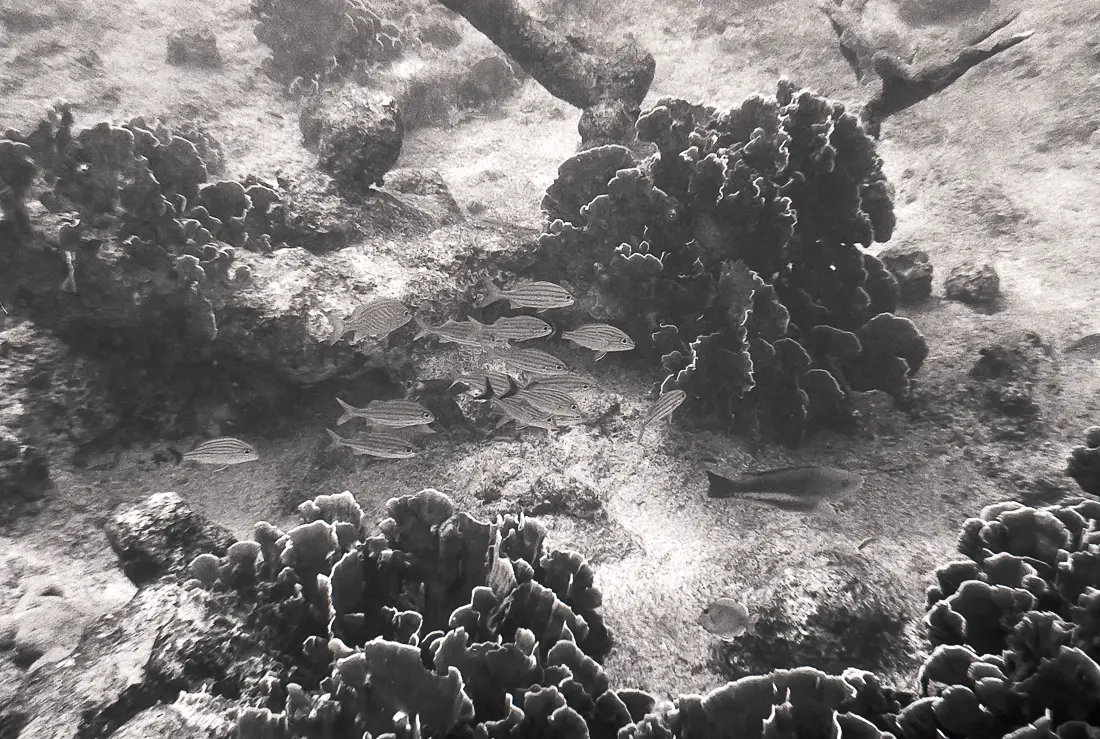
In very clear water on a quiet day you can get pretty sharp results:
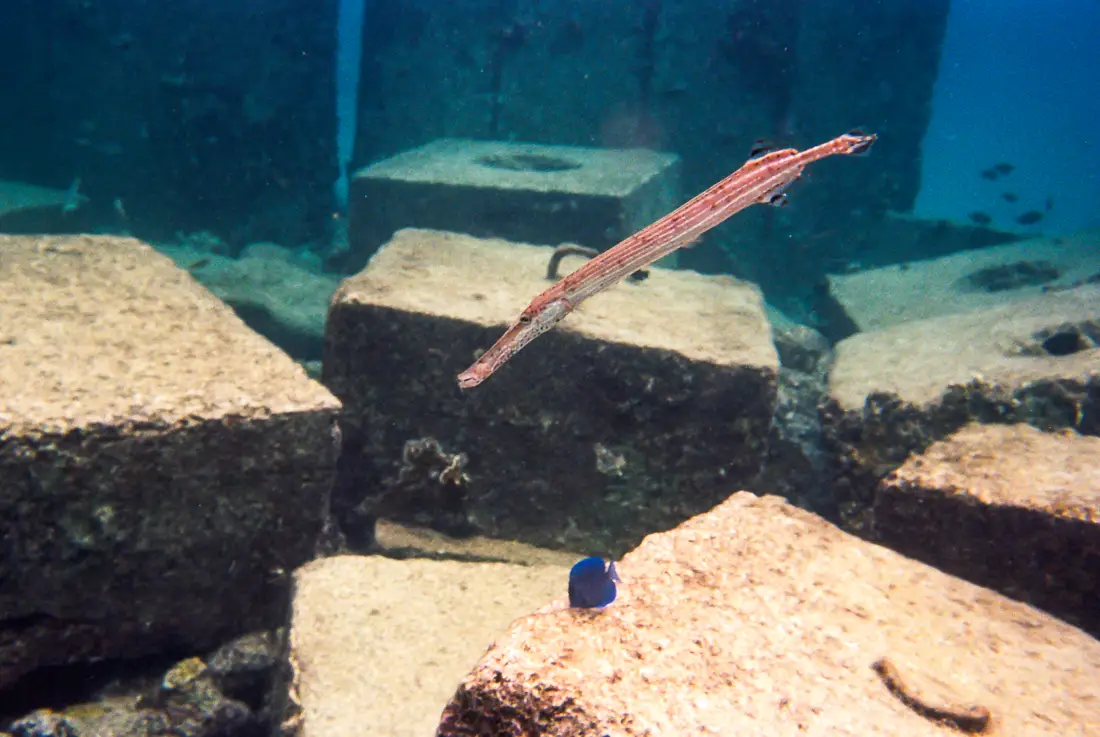
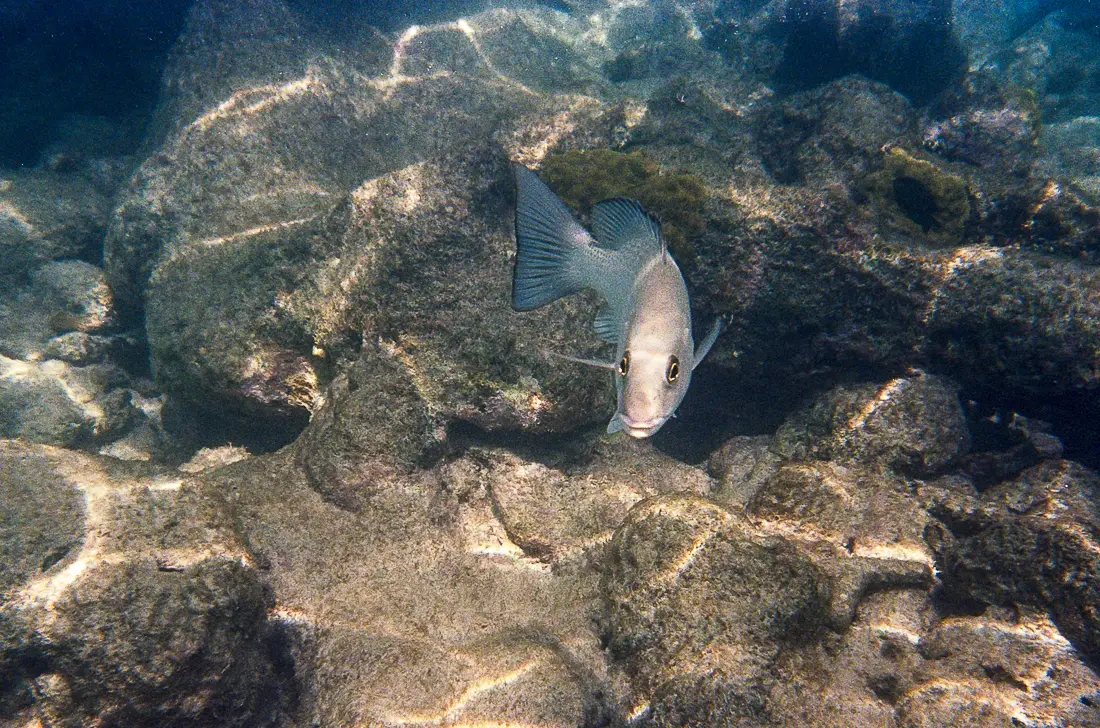
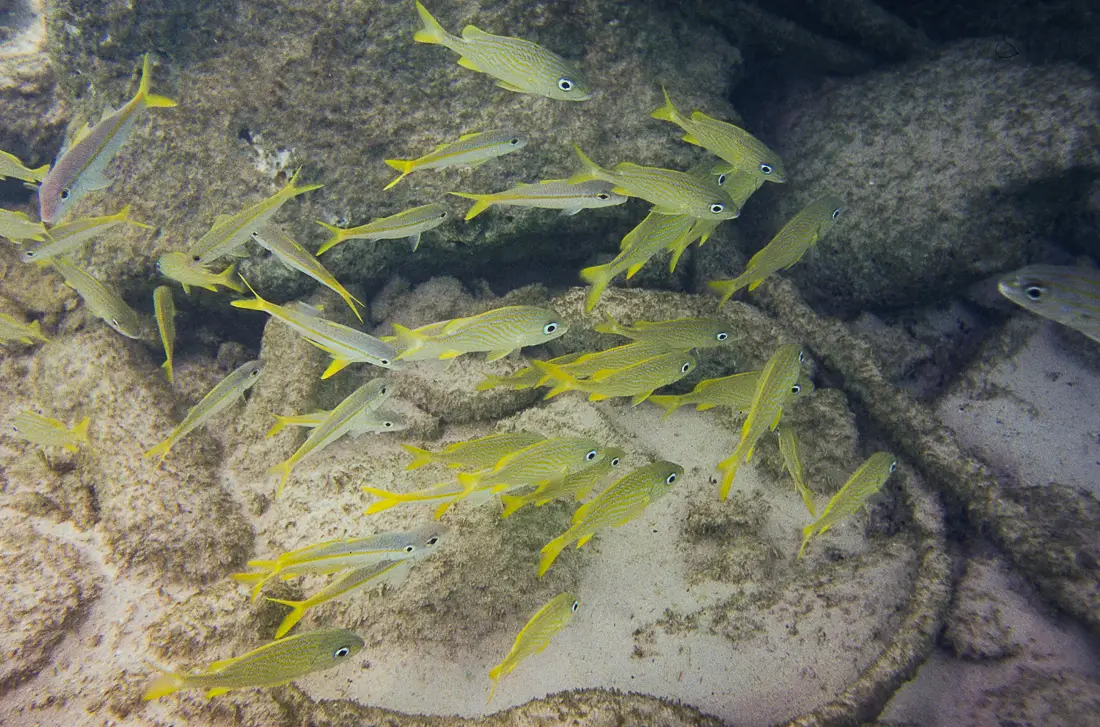
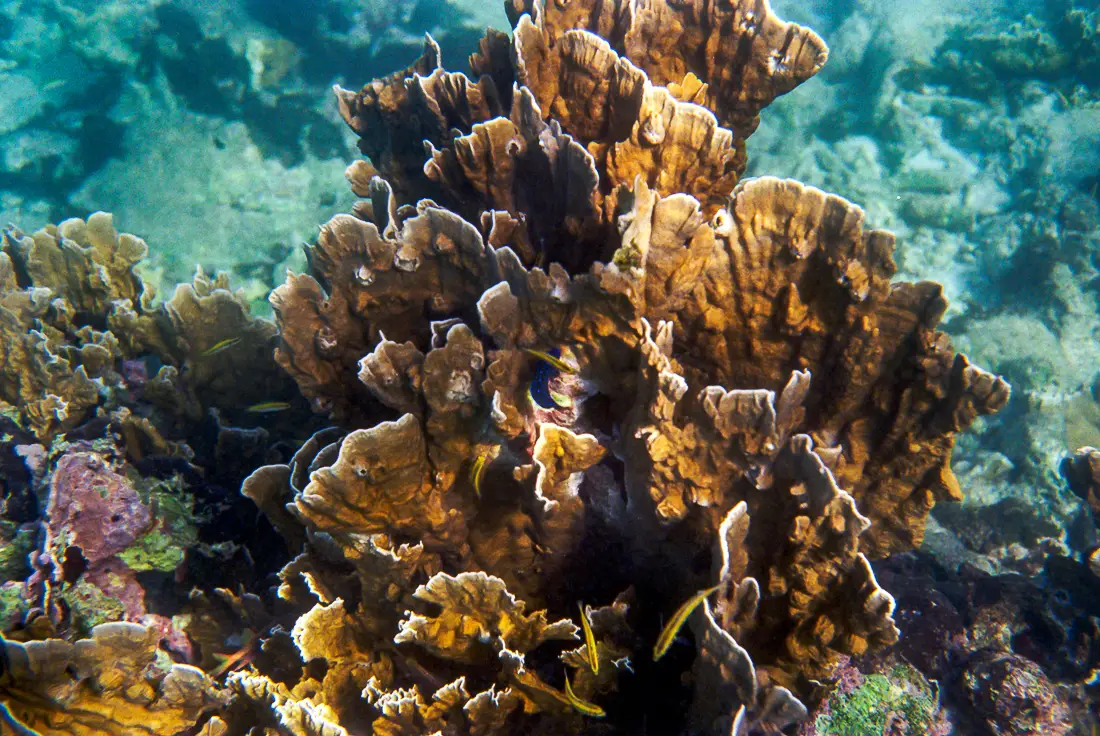
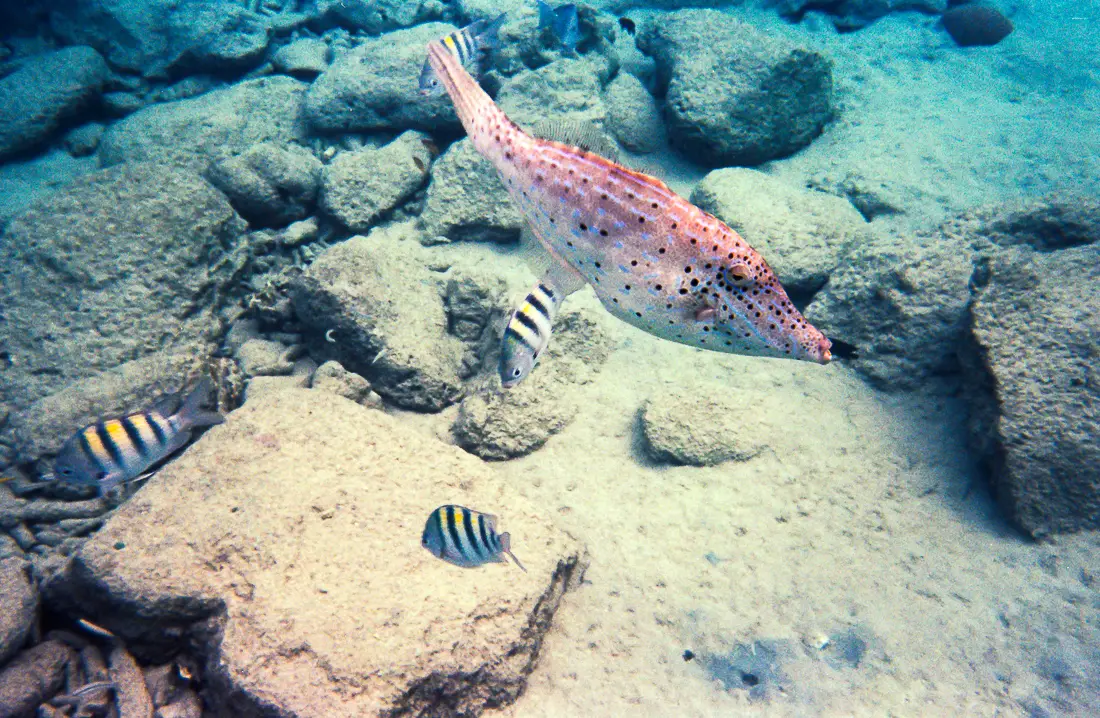
I managed to get the painterly effect I was after on one morning when I used the 80mm lens. I had trouble focussing, as the depth of field is pretty low with this lens. I only used it once because of this, as I didn’t see the results until after the holidays I had no idea if the photos were anything decent. I was afraid I missed focus on all of them. However, although the next photos are really not sharp, they do seem to be in focus, and they have the look I had in mind when I decided to shoot film:
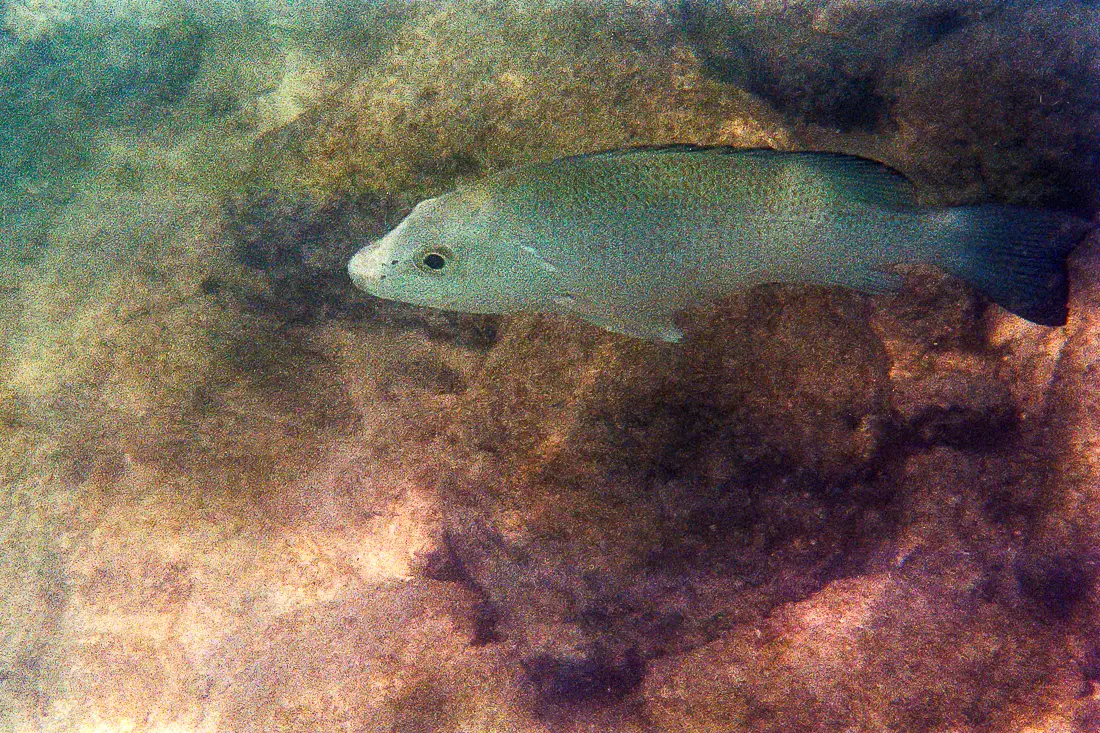
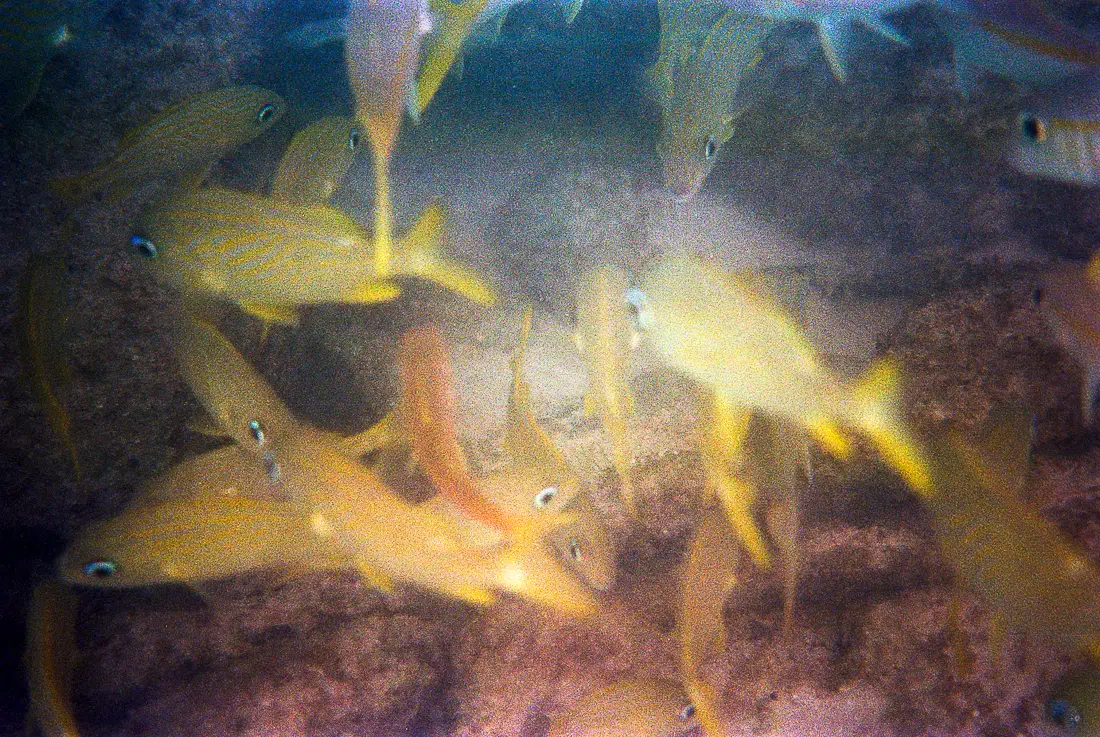
This next one shows a similar quality taken with the 35mm lens. But it was a dark corner with a lot of current from waves rolling in against the shore. I really wanted to try to capture all the little orange fish in their cave, so I am still pleased with the result, although there are a lot of reflections from air bubbles.
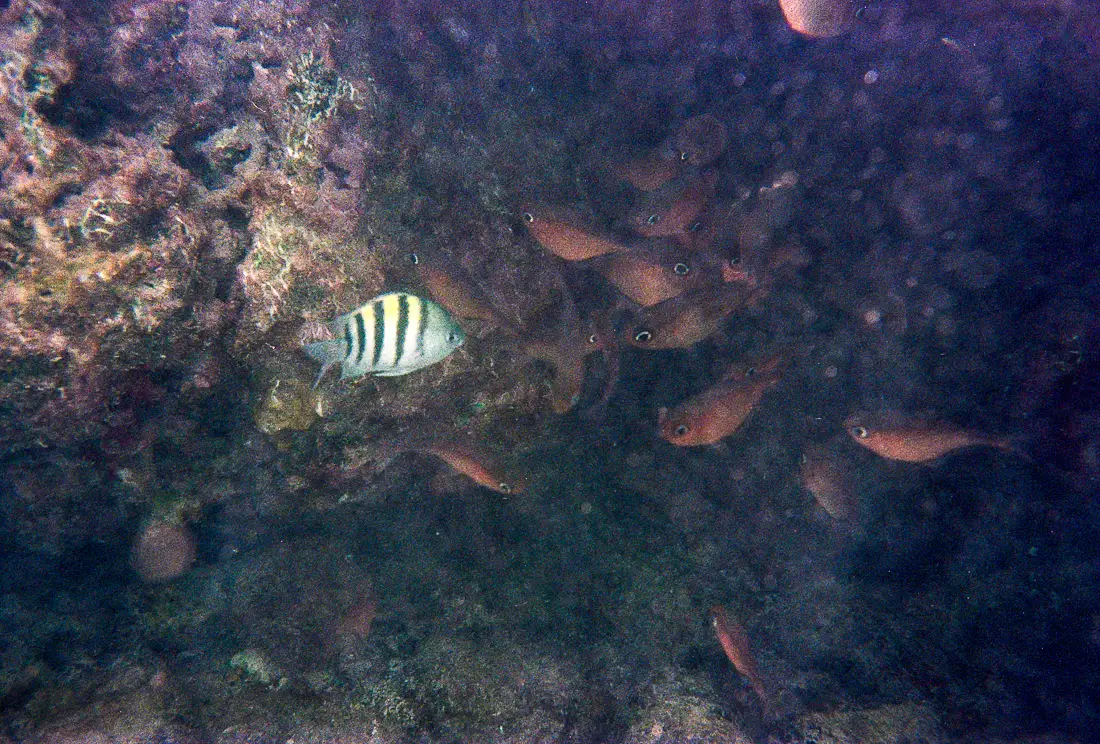
The 80mm lens is very capable of making sharp photos in the right conditions. I made a photo above water of a crab (from standing in the water, also a good use for this camera), and I think this photo demonstrates the capabilities when the light is right:
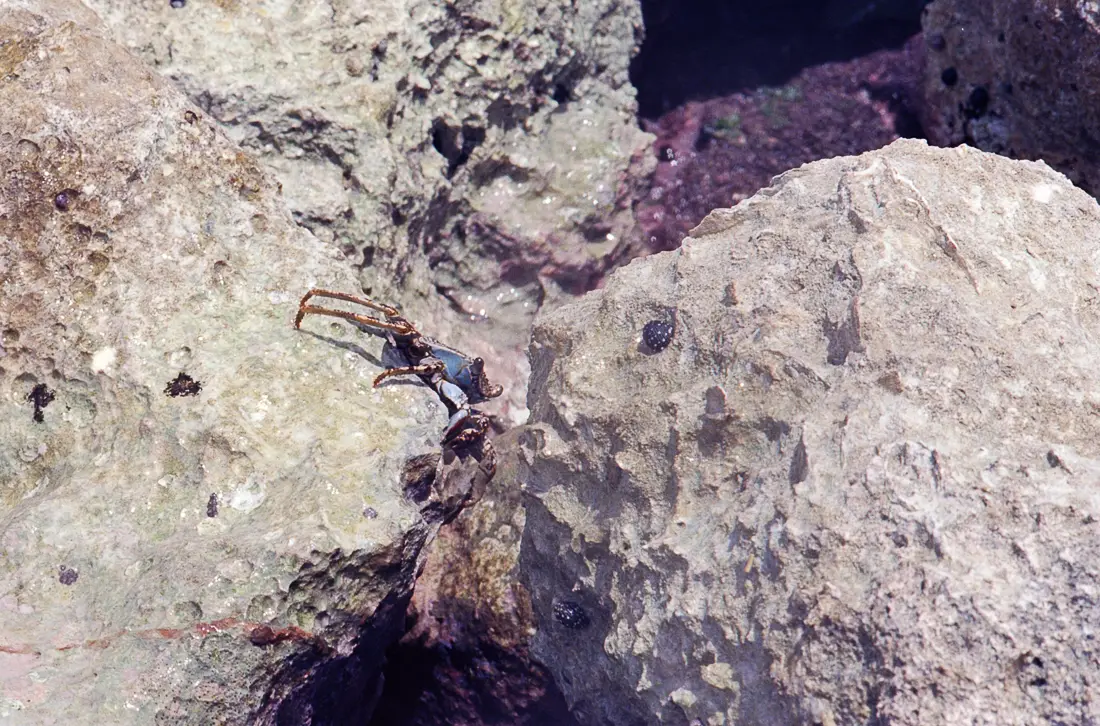
I was scared for the photos I took with Velvia, as I had no experience with slide, and it is still a pretty slow film. But under the right circumstances the result is not all that bad:
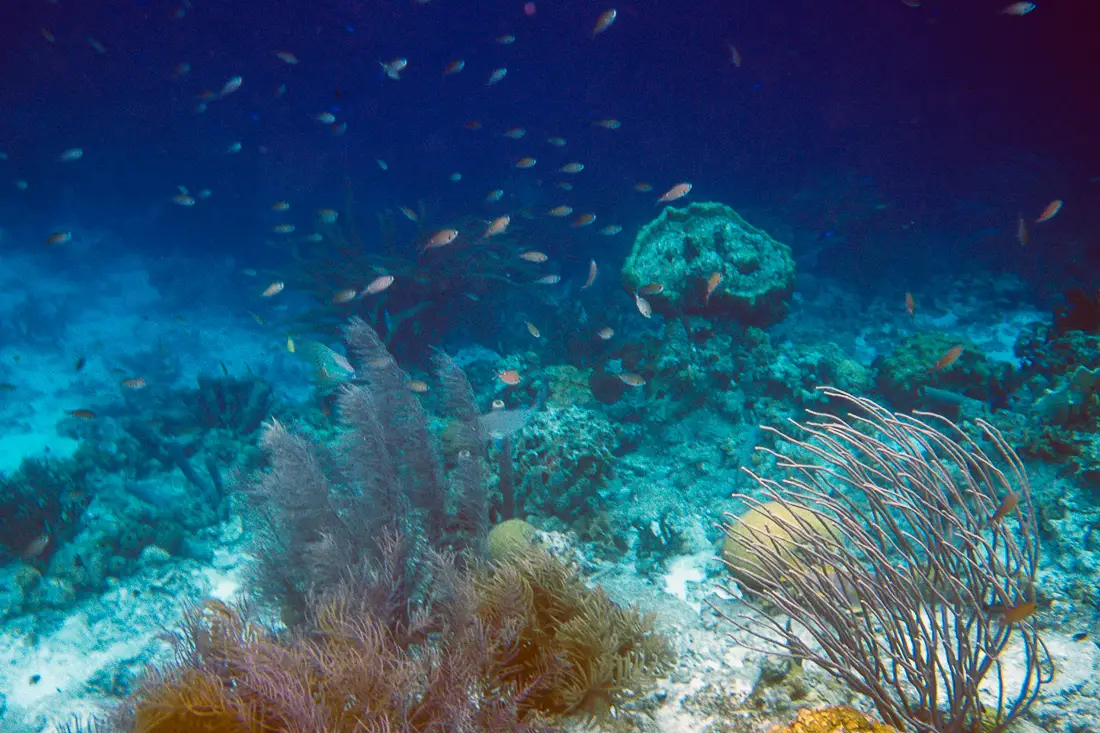
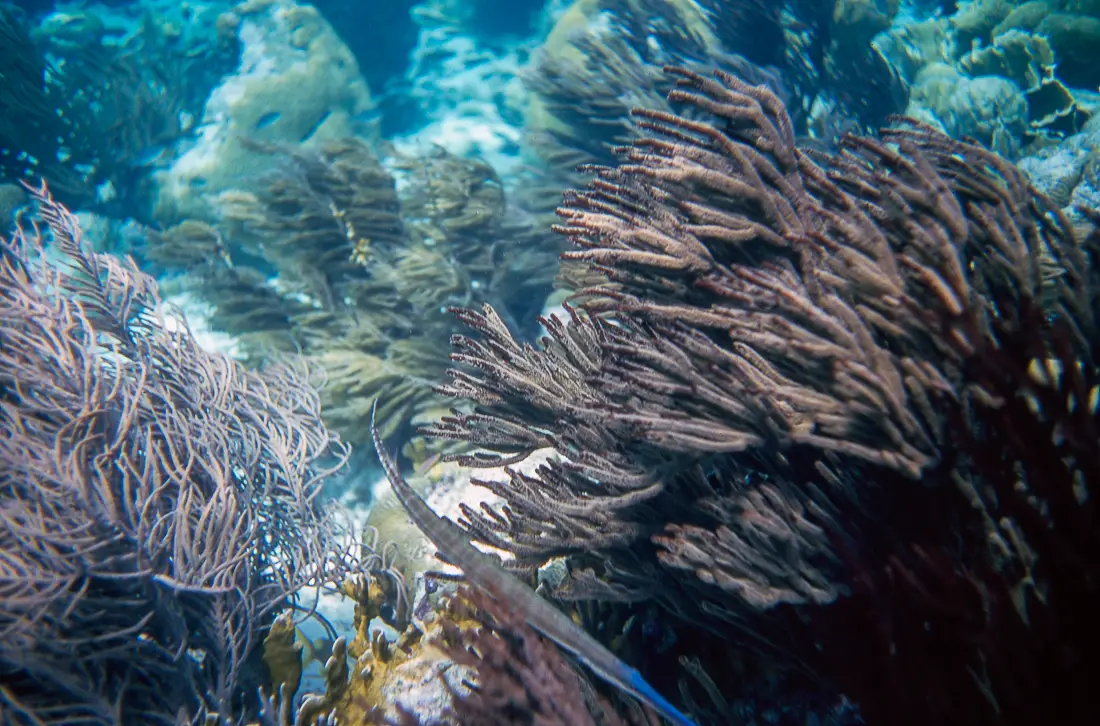
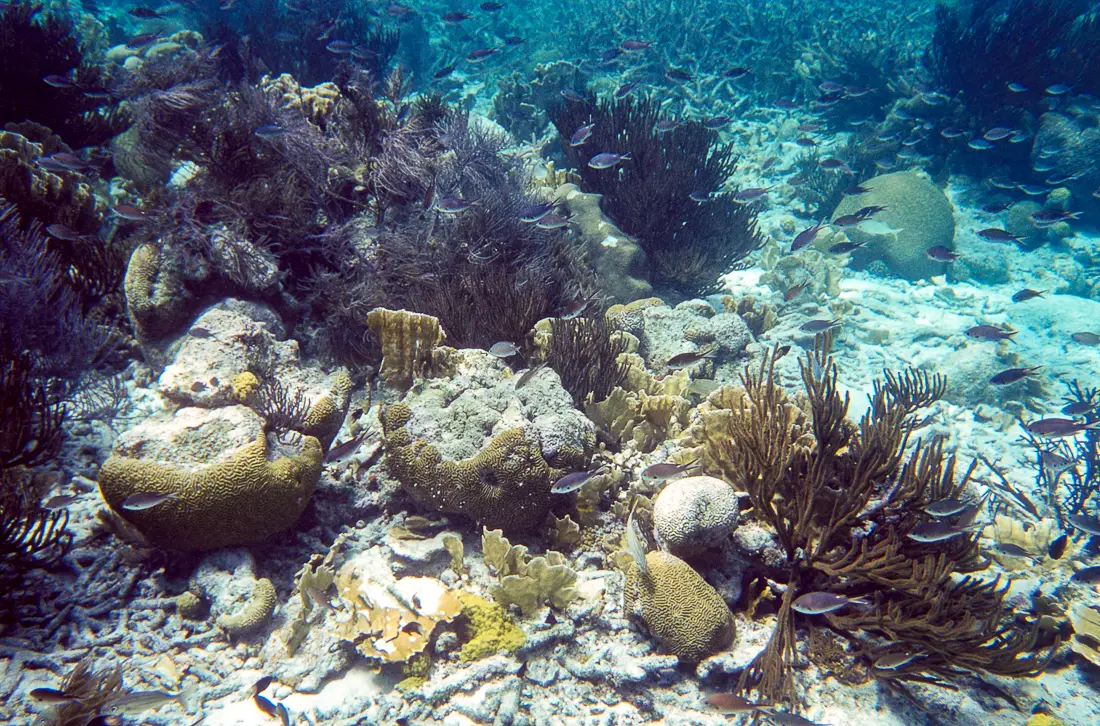
All in all I am pretty pleased with the results. Zone focusing can be pretty tricky underwater, but the digital auto-focus camera my man used focussed on air bubbles a lot of the time. So while I didn’t nail focus every time, the keeper rate was still higher with the Nikonos compared to the digital camera. The results highly depend on light and water conditions, which is true for every camera you use. The one thing that could help is a closer focusing range, as close focus helps to get better colours.
And just because I can, I want to share a few more photos 😉 :
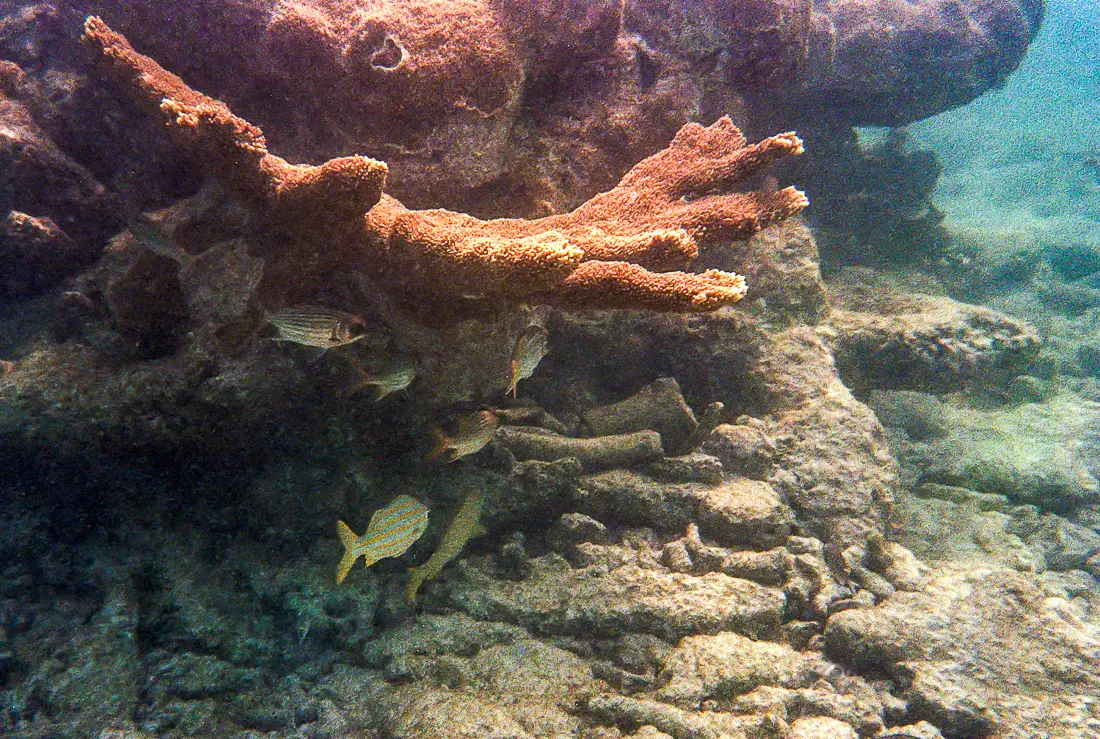
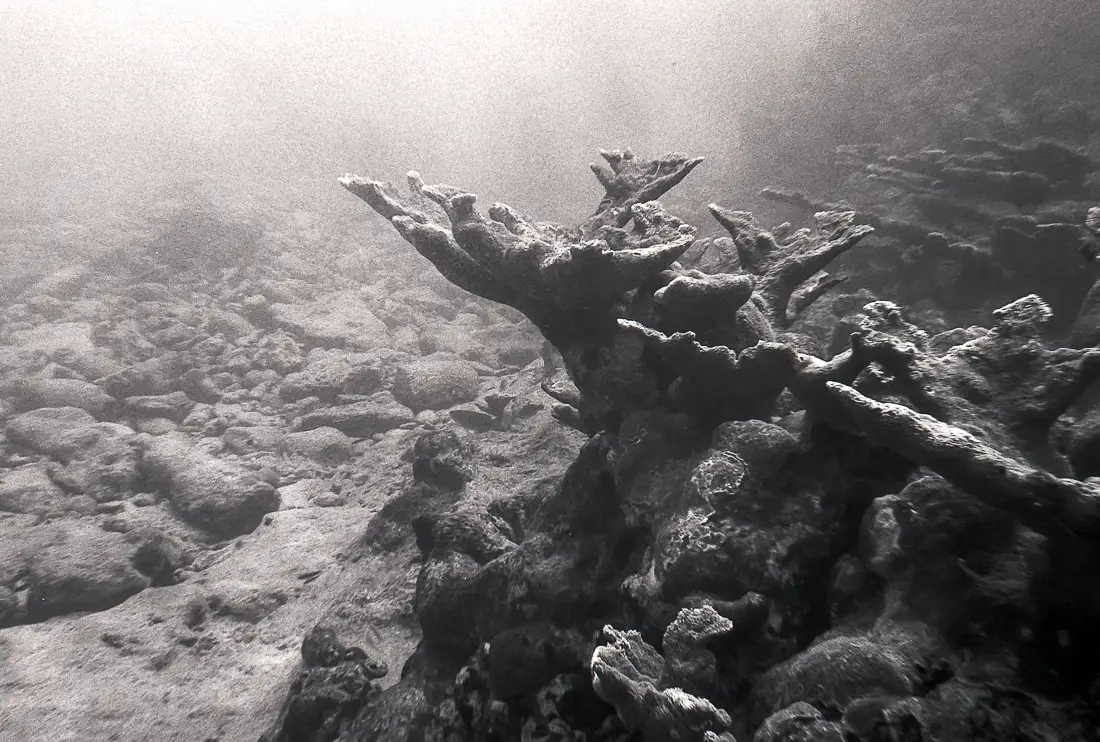
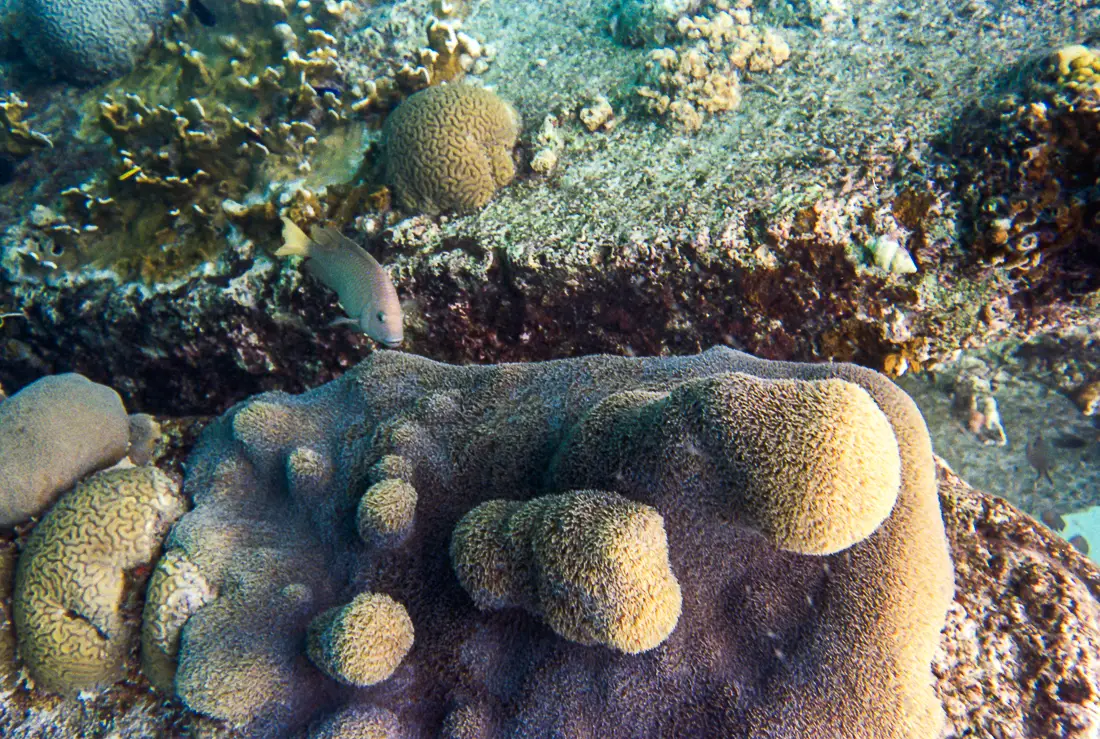
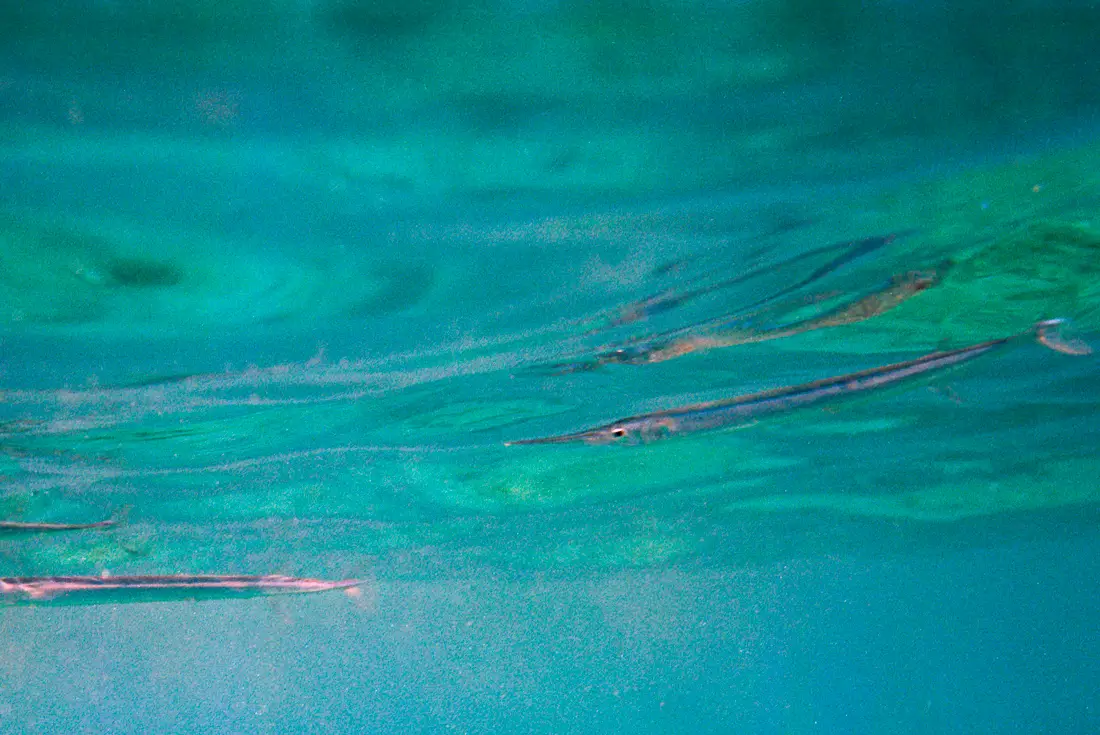
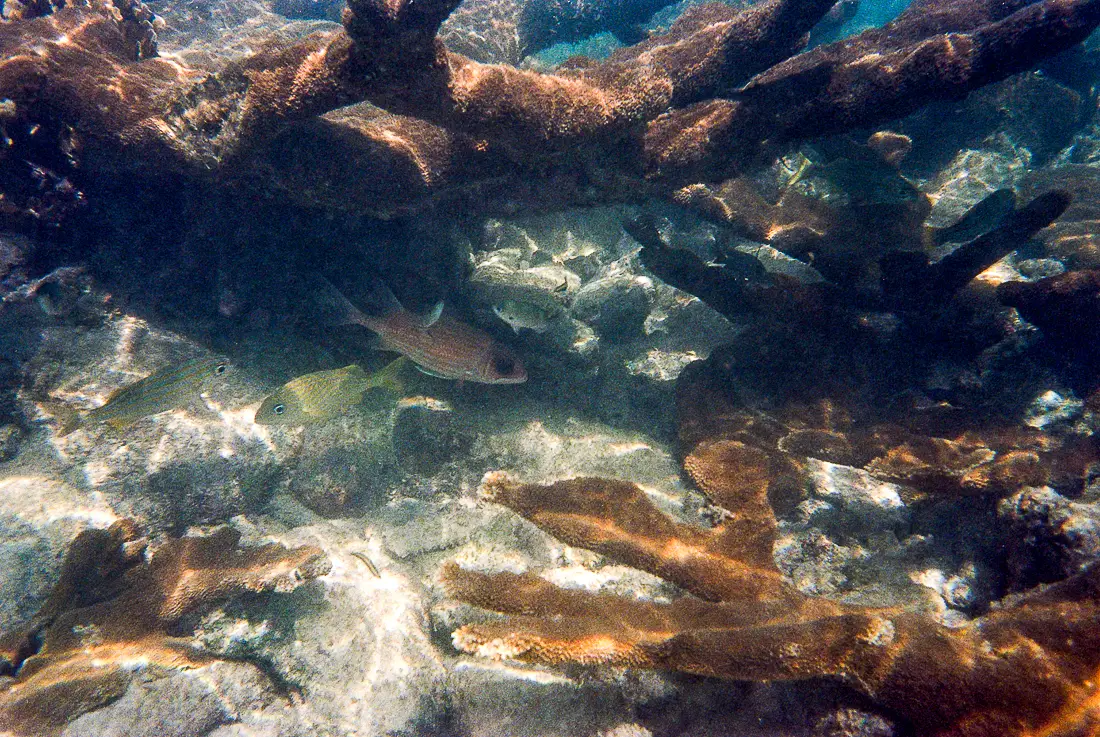
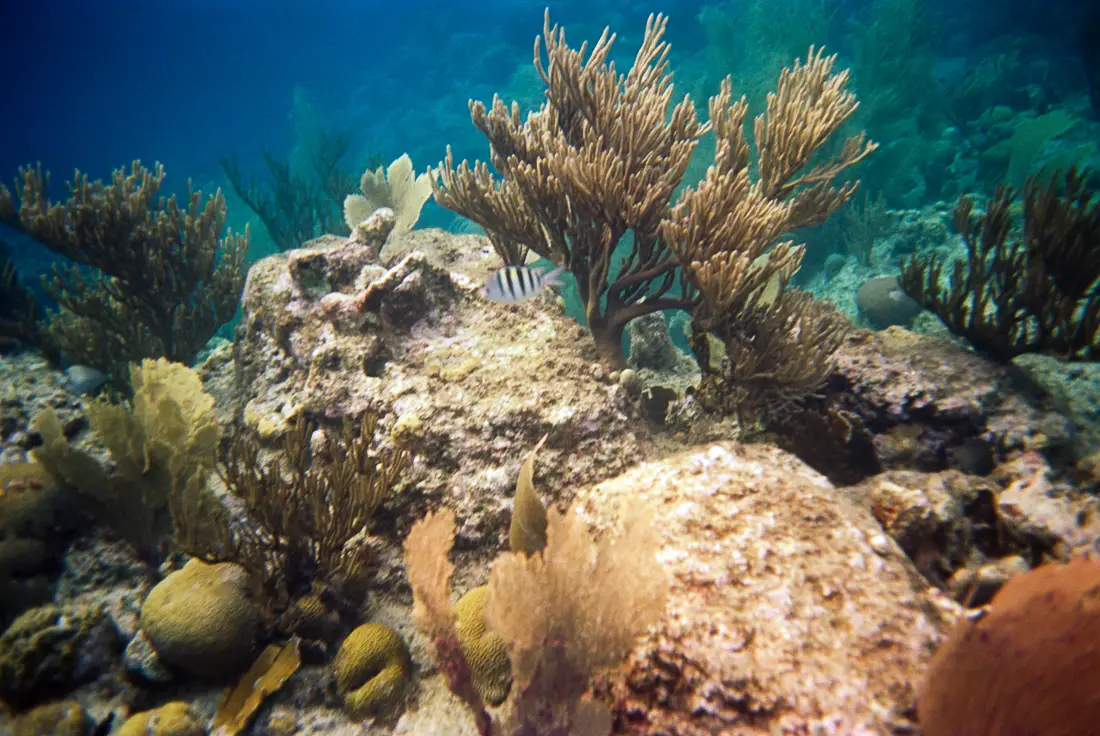
All photos were scanned on my Epson V800. All negative colour film was developed by me. The black and white film and Velvia was developed by AG-photolab.
If you are interested you can find more of my photos, both digital and film, on my website: whataukjesees.com. I also post film photos regularly on instagram.
Thanks a lot for reading, and Hamish, thanks for having me!
Share this post:









Comments
stefano on Nikonos V – Underwater Film Photography – by Aukje
Comment posted: 23/04/2017
I think would work great to shoot some bigger fish. Amazing how you got that trumpet fish in focus. I wonder if I should use it on the next trip. But issue with underwater there are so many misses. I have a Nikon 1 J4 with underwater housing that I bought as a closeout and it is great. But carrying that and a Nikonos may be too cumbersome.... I also purchased a Nikon L35 AW that may be ok in such shallow water.
I have to run, i have to read your post, just looked at the photos / captions.
Comment posted: 23/04/2017
Abe on Nikonos V – Underwater Film Photography – by Aukje
Comment posted: 23/04/2017
Comment posted: 23/04/2017
MIke on Nikonos V – Underwater Film Photography – by Aukje
Comment posted: 23/04/2017
Comment posted: 23/04/2017
Dan Castelli on Nikonos V – Underwater Film Photography – by Aukje
Comment posted: 23/04/2017
Back when a was a little guy [I'm now 65] my parents had piles of old National Geographic magazines dating from the 1930's & 40's.
There were several articles on underwater photography. As I recall, the photos were made using the Autochrome process. They were almost impressionistic, with grainy, color. They were beautiful. The series of photos you've posted bear a strong resemblance to those photos.
Very well done.
Comment posted: 23/04/2017
Stéphane on Nikonos V – Underwater Film Photography – by Aukje
Comment posted: 24/04/2017
Comment posted: 24/04/2017
George Appletree on Nikonos V – Underwater Film Photography – by Aukje
Comment posted: 24/04/2017
Comment posted: 24/04/2017
John VanderMolen on Nikonos V – Underwater Film Photography – by Aukje
Comment posted: 24/04/2017
Comment posted: 24/04/2017
Stefano Giovannini on Nikonos V – Underwater Film Photography – by Aukje
Comment posted: 25/04/2017
Comment posted: 25/04/2017
Mark on Nikonos V – Underwater Film Photography – by Aukje
Comment posted: 07/05/2017
It was sharp and quiet. Perfect for discreet street photography.
Tom on Nikonos V – Underwater Film Photography – by Aukje
Comment posted: 15/05/2017
What sort of aperture range were you shooting at for most of these?
I've used zone focusing cameras before with no issues, but with the magnification underwater I can imagine shooting at wide apertures can be tricky, is my assumption there correct or to follow up from my question above can you still shoot at small enough apertures to zone focus easily?
Comment posted: 15/05/2017
Experiments in Developing Colour Film At Home: The Chemicals Dilemma - Guest Post by Aukje - 35mmc on Nikonos V – Underwater Film Photography – by Aukje
Comment posted: 11/11/2017
Nikon re-registers legendary ‘Nikonos’ trademark | Give Info on Nikonos V – Underwater Film Photography – by Aukje
Comment posted: 22/08/2018
Chris on Nikonos V – Underwater Film Photography – by Aukje
Comment posted: 27/02/2019
Quick question if you wouldn't mind, I'm looking to purchase a Nikonos V, and I could only find a 20mm lens, do you think that is ok? or would you rather recommend a 28 / 35mm lens? Also did you apply any sort of lens filter to correct the color?
Thanks!!
Comment posted: 27/02/2019
Comment posted: 27/02/2019
Sealife camera on Nikonos V – Underwater Film Photography – by Aukje
Comment posted: 19/10/2022
Comment posted: 19/10/2022
Cape Town Carports: Coastal Vehicle Protection Solutions cape town on Nikonos V – Underwater Film Photography – by Aukje
Comment posted: 26/08/2023